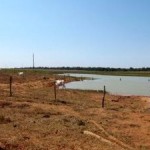Second, instead of trying to simplify these governance arrangements and coordinate them primarily by rules or incentives, they should be coordinated through problem-focused, on-the-ground learning about institutional arrangements that work. This method of coordination builds on the existing strengths of forest governance arrangements and of the global forest policy community. It requires very few new components but it calls for a collective will to use those components differently than they are being used at present.
Key Messages
International forest governance is complex and fragmented.
An increasingly comprehensive set of international goals and priorities has emerged to steer forest use and conservation, accompanied by institutions, policies and mechanisms. The result is a complex and fragmented web of international forest governance, the constantly evolving outcome of many different initiatives rather than the static product of an overall design. This set of governance arrangements has identifiable consequences but not always those that were originally intended or desired.
Many critical forest problems are cross-sectoral.
Improving international forest governance means acknowledging that many of the most serious forest challenges are highly cross-sectoral and require significant engagement with the agricultural, mining, energy, transportation, trade, climate change and other sectors and interests. Although international forest institutions and actors have long recognized this problem and have called repeatedly for it to be addressed, identifying and promoting effective inter-sectoral coordination and collaboration remain a largely un-met need.
Complex forest problems require synergistic approaches involving a wide range of policy instruments.
The complex causes of forest problems, and the varied contexts in which they arise, require the application of the full range of available policy instruments. Thus, both formal international rules and other forms of authority and steering are potentially useful for achieving forest-related goals. An exclusive focus on one or the other overlooks the critical importance of developing a portfolio of mutually supportive policy instruments.

The forest governance challenge is to move from a focus on forests towards the concept of ‘Forests+’, which embraces inter-sectoral and inter-institutional complexity.
Forest issues should be reframed as ‘Forests+’ issues to capture their vital cross-sectoral dimensions. The international forest policy community must be more aware of and ready to act on developments outside the forest sector.
A comprehensive effort to reframe issues from forests to forests+ should begin with the acknowledgment that forest politics is not just about the interplay of interests and institutions. Ideas and discourses matter because they shape the nature and limits of governance arrangements. They do this by encouraging or discouraging the participation of relevant state and non-state actors and by enabling or disabling deliberation and policy learning in the deliberate attempt to adjust the goals or techniques of policy in response to past experience and new information.
Forests+ approaches will involve a greater understanding of actors’ interests, ideas and incentives in complex environments.
International actors and institutions should support efforts to strengthen institutional cooperation and monitor and evaluate the degree and effectiveness of collaboration across relevant sectors and interests. Global governance arrangements should increasingly be based on a sound understanding of the conditions, interests and incentives that motivate collaboration between different actors rather than sustain conflict and divergence.














